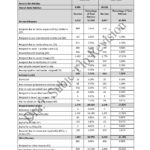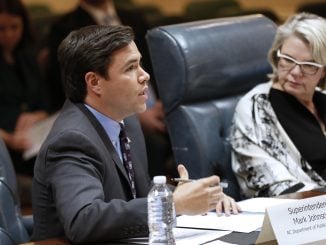
RALEIGH — North Carolina’s public schools saw a decrease in teacher attrition during the 2023-24 school year, according to the State of the Teaching Profession report presented to the State Board of Education.
The attrition rate dropped to 9.88% in 2023-24, down from 11.5% in the previous year. This decrease represents nearly 1,500 fewer teachers leaving their positions out of 89,972 full-time permanent teachers employed in the state’s public schools. This rate still exceeds the seven-year average of 8.64%.
“While the report shows improvement in the percentage of teachers staying compared to prior years, there are still far too many teachers leaving the profession,” North Carolina Superintendent of Public Instruction Mo Green said in the agency’s press release.
Green also emphasized the need to better retain teachers through increased respect, competitive salaries, and growth opportunities.
Both Green and the State Board of Education have proposed substantial increases in teacher compensation to raise average salaries, along with expanding the Advanced Teaching Roles Program to provide advancement opportunities and salary supplements.
Experience levels and attrition
Teachers at both ends of the experience spectrum had the highest attrition rates. Those with 0-5 years of experience left at rates between 11.7% and 17.5%, while veteran educators with 28 years or more of experience departed at rates between 18.5% and 26.8%.
Beginning teachers, defined as those with fewer than three years of experience, had an attrition rate of 12.92%, higher than the 9.31% rate for more experienced educators. Of the 14,124 beginning teachers employed during the reporting period, the report says 1,825 left North Carolina public schools.
Left out of the key findings data are the 333 teachers who left their position but stayed in North Carolina K-12 education by taking a position in another school, district or charter school.
Data on mobility of teachers within the state showed that, on average, 4.88% of the state’s teaching force changed employment last school year, resulting in an average “LEA-attrition rate” of 14.76% when combined with the state attrition rate.

Reasons for leaving
A deeper dive into the 28 reasons for leaving put departures from Local Education Agencies (LEAs) in four main groups and included the total number of teachers for each group for the 2023-24 and the previous school year. The groupings included personal reasons, initiated by the LEA, beyond control of the LEA, and “other.”
Personal reasons continue to be the predominant factor behind teacher attrition, accounting for 51.95% of departures (4,616 teachers) in 2023-24. This represents an increase of 3.97% from the 2022-23 rate of 47.98% (4,977 teachers). Within this category, “resigned due to a career change” was cited as the single largest reason at 16.82% of all departures.
Departures initiated by LEAs increased slightly to 7.07% (628 teachers) in 2023-24, up from 5.92% (614 teachers) the previous year.
Factors categorized as “beyond control of LEA” accounted for 20.02% of departures (1,779 teachers), showing a 5.1% increase from 14.92% (1,548 teachers) in 2022-23. Within this category, “retired with full benefits” was the second most common individual reason for leaving at 16.14% of all departures.
The most notable change came in the “other reasons” category, which decreased last year to 20.97% (1,863 teachers), down from 31.18% (3,234 teachers) the previous year.
The report also noted that 333 teachers left their positions but remained in North Carolina education by taking positions in other schools, districts or charter schools, highlighting internal mobility within the state’s education system.
Principal data included for first time
This year’s report included first-time data on principal retention. Of the 2,498 principals employed in public school districts, 186 (7.45%) left employment in North Carolina public schools at the end of the 2022-23 school year, with 65% retiring.
Most principals (92.4%) remained in their role from 2023 to 2024, with about 4.9% of those who left advancing to district-level positions.
In low-performing schools, more than two-thirds of principals remained at the same school, and the attrition rate for principals in these schools (7.41%) was slightly lower than in schools that were not low-performing (7.46%).
Licensing and attrition
Per the report, almost half of all new educators in the state entered the profession through alternative licensure routes, though this number has decreased since last year. Since 2017-18, the use of alternative pathways has increased by 19.6%.
Teachers with temporary licenses had the highest attrition rate at 22.28%, while residency licensed teachers departed at a rate of 15.34%.
The report shows 61% of teachers issued permits to teach in 2018-19 converted to a residency license by 2023-24, and 55% of emergency licenses were converted during the same period.
“This middling conversion rate shows that we still have some work to do when it comes to supporting our alternatively prepared teachers,” said Tom Tomberlin, senior director of educator preparation, licensure and performance at the North Carolina Department of Public Instruction.



